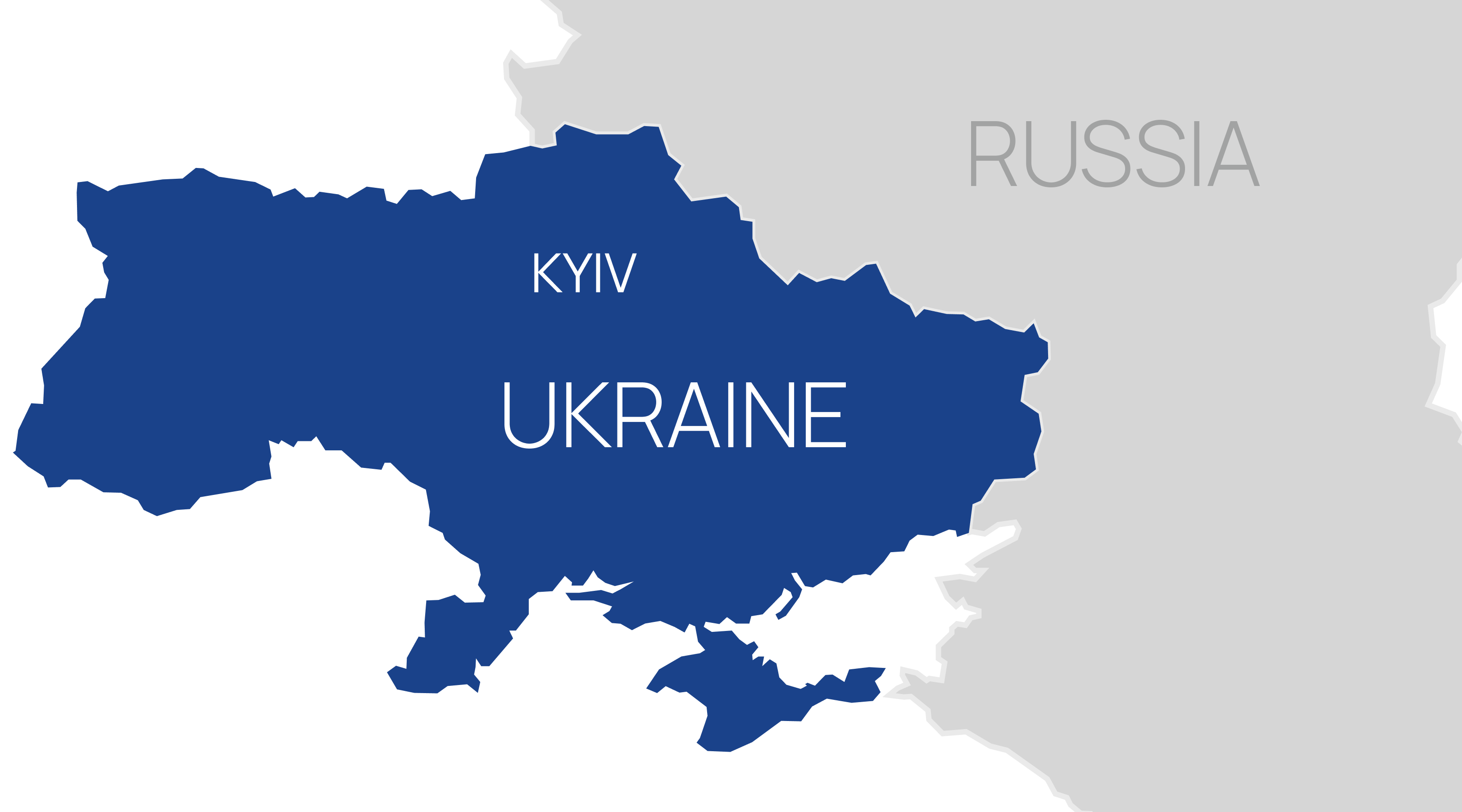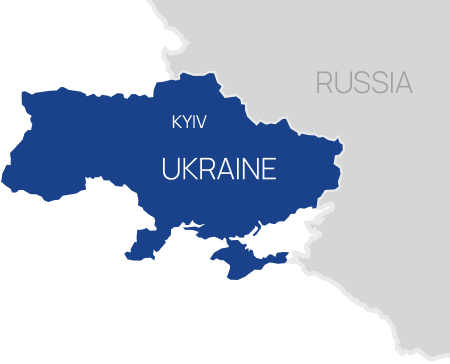In 2022, Kyiv marked its 1540-year anniversary
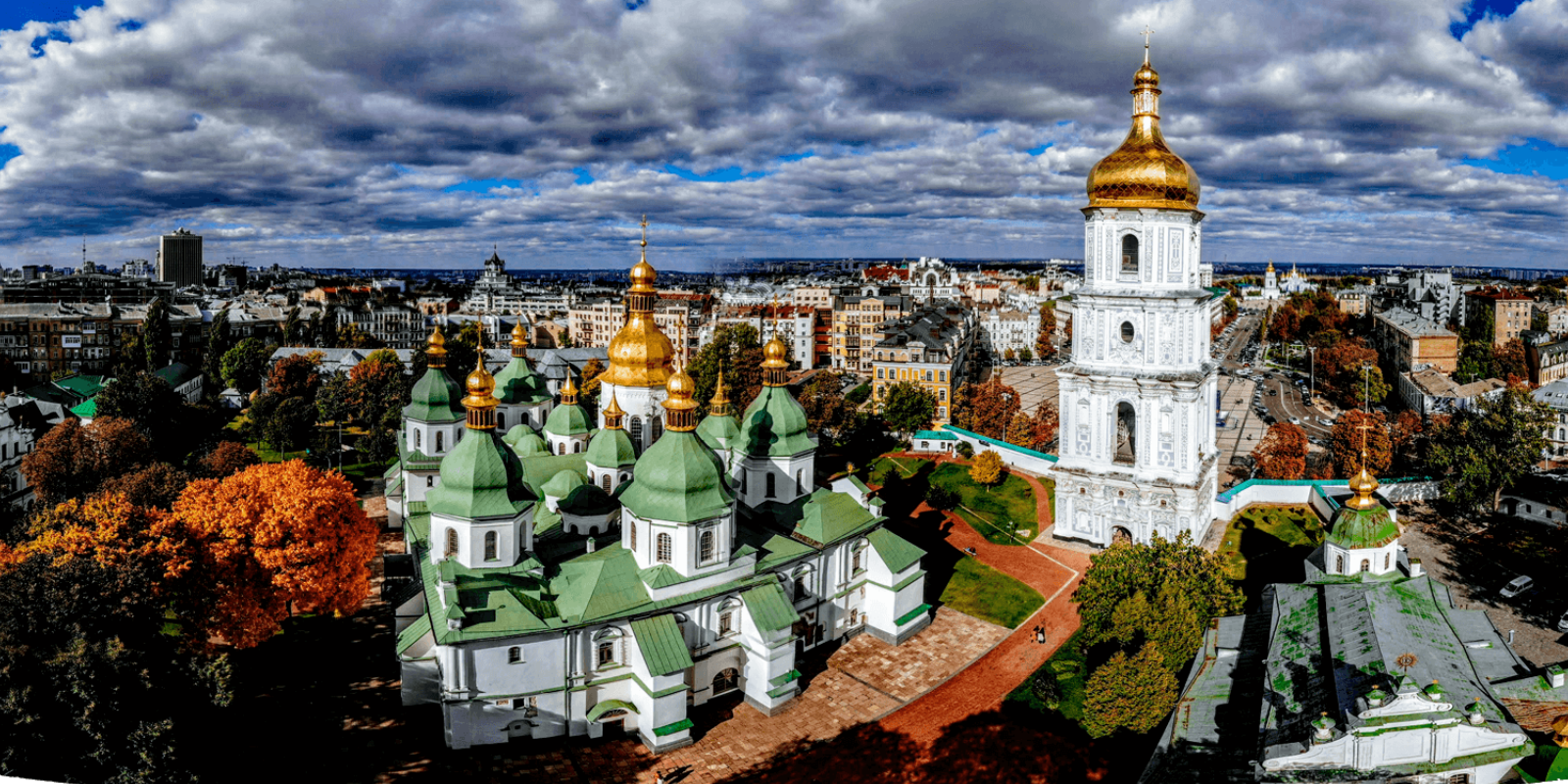
Visualization of Kievan Rus
Kyiv was founded by Nordic princes, the Rurik clan, who arrived in the early middle ages to colonize the Slavic tribes of eastern Europe.
Kyiv became the capital of the Kyivan-Rus Empire, one of medieval Europe’s largest and most influential dynasties. No one knows for sure from where the term “Rus” comes from, but a good guess is the red hair of the norsemen. “Russia” probably derives from Rus, but a long time afterwards.
Alas, such a beautiful and rich territory was fated to be fought over by rising dynasties throughout the middle ages. Kyiv was sacked in 1262 by invading Mongol hordes, devolving into Rurik-led principalities, like Halych-Volyn centered in Lviv, and Moscovia, a simple far northern trading outpost when mighty Kyiv was sacked.
“They destroyed cities and castles and killed men and Kyiv, which is the greatest Ruthenian city they besieged; and when they had besieged it a long while they took it and killed the people of the city. So when we went through that country we found countless human skulls and bones from the dead scattered over the field. Indeed it had been a very great and populous city and now is reduced almost to nothing. In fact there are hardly two hundred houses there now and the people are held in the strictest servitude.”
For the next centuries, the black earth of Ukraine was constantly overrun by neighboring empires. Generally, the territory east of the Dnipro River was occupied by the Muscovites, territory west of the Dnipro by Lithuanian and Polish empires and the southern coastal lands including Crimea under Turkish and Ottoman control.
The Ukrainian Kosaks arose in the sixteenth century, freemen Ukrainian fugitives in central Ukraine who were allowed independence as long as they fought off Turkic incursions. In 1654, the Zaporizhzhya Sich allied itself with Moscovia against the Poles, a fateful decision that started a centuries-long Kremlin quest to erase the notion of Ukraine.
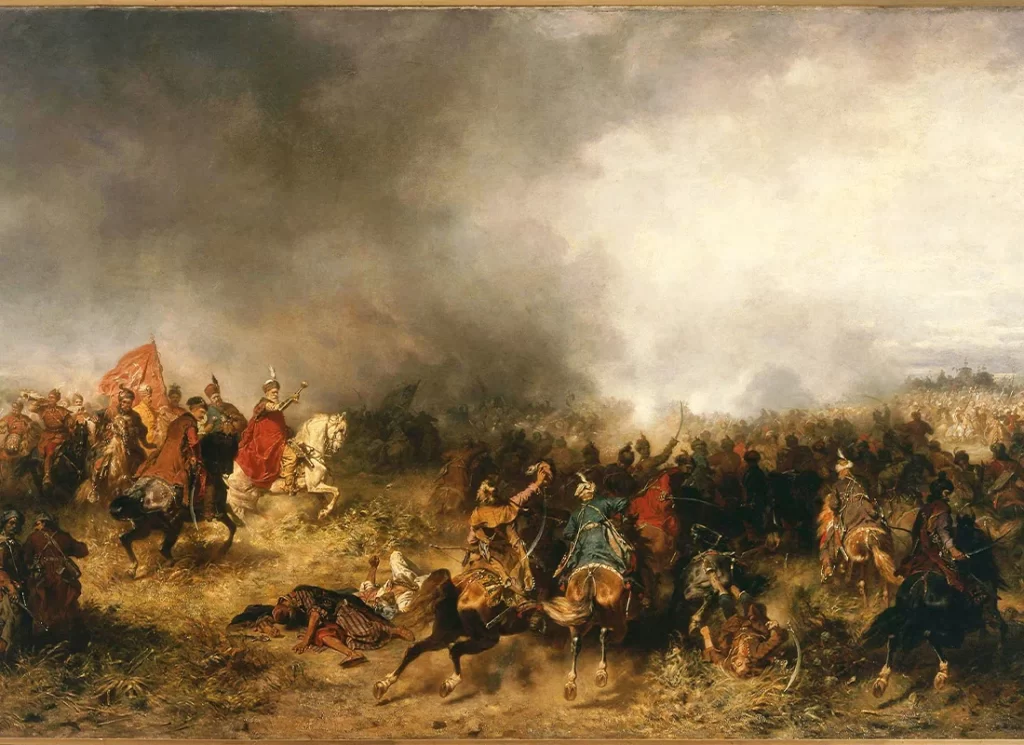
Artwork by Jozef Brandt – Battle of Khotyn (1621)
And where was “Ukraine” in all this? Language scholarship has a lot to say about this. During the middle ages as Latin devolved into Spanish, Italian, Romanian and so forth, so too the Slavic languages diverged into a large family of distinct Slavic languages like Polish, Czech, Belarusian and Ukrainian. Interestingly, Russian, way off on the periphery of Slavic lands, is the least mutually-intelligible of the Slavic languages.
From the 17th century to modern times, Moscovia in its various forms has sought to erase the Ukrainian language and culture from existence. Ukrainian independence was brutally suppressed by the Bolshevik Red Army in the 1920s, followed by Stalin’s campaign to wipe out the successful Ukrainian agrarian middle class with terror, repression and a series of artificial famines in the 1920s and 1930s. Following World War II and the incorporation of western Ukrainie in the Ukrainian Soviet Socialist Republic, Moscow carried out wave after wave of terror and represion.
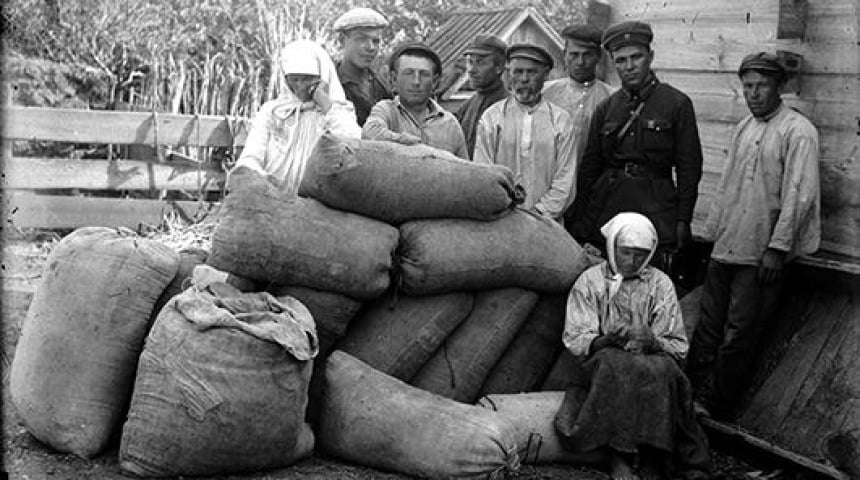
Holodomor in Ukraine (1921-1923)
Millions of Ukrainians were killed or exiled to Siberian work camps as Moscow shipped millions of Russians into Ukraine to impose a campaign of Russification. The Ukrainian language was ridiculed as an uneducated cockney of Russian, children forced to learn and speak Russian in schools and job opportunities denied to Ukrainian speakers. Ukrainian historical documents and history books were burned or locked away in vaults as Soviet propagandists re-wrote world history, pronouncing Russia the progenitor of all Slavic culture and defender against a hostile jealous world.
It is only by a miracle that Ukraine exists to this day. In 1991, the Soviet Union fell apart under the weight of its own corruption and dysfunctional dogma. Ukraine was suddenly a free nation sandwiched between democratic Europe and its ancient Russian adversary. On balance, Ukrainians chose the European vector. But Putin’s plan was to gain political control through a puppet regime, culminating in the stealing of the presidential election of 2004.
Millions of Ukrainians across the country came to the streets to protect their fragile democracy. The oranges that protesters stocked in their tent camps through the winter of 2004-2005 became the color of resistance. The puppet president’s wife took the stage – in Severodonetsk – to announce that the oranges were shipped in by the United States filled with narcotics.
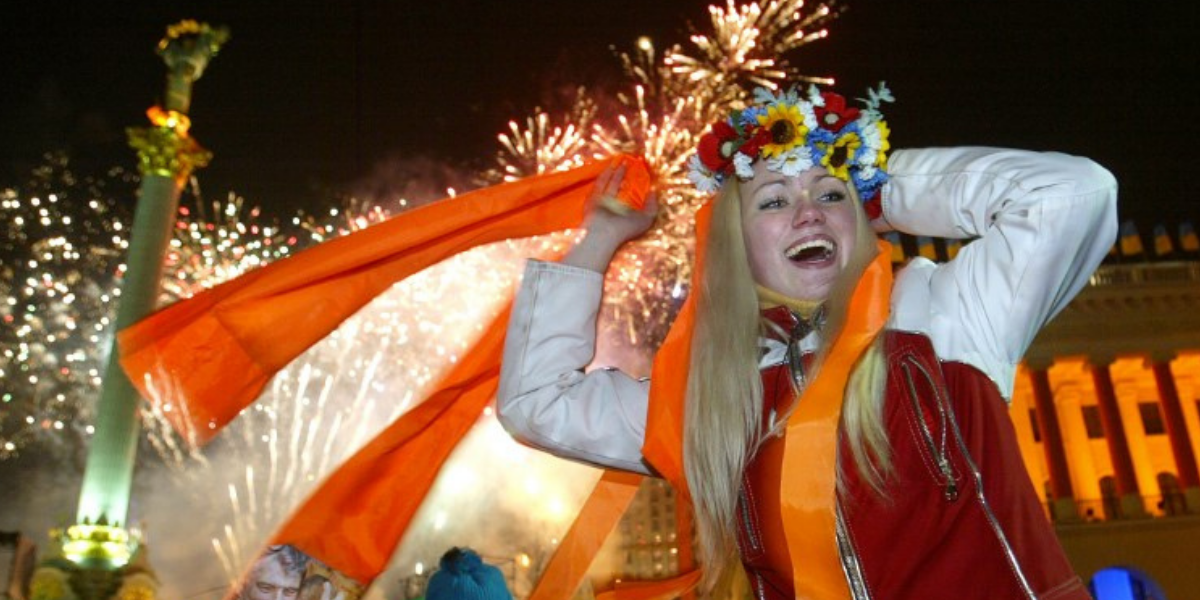
Orange Revolution 2004
During the Orange Revolution, the heart of the modern, peaceful and free Ukraine began to beat stronger than ever in history. Mass media rebelled in favor of truth. An impartial, independent supreme court ruled in the people’s favor. Thousands of international observers poured into Ukraine to monitor a final free election run-off that selected – by a narrow margin – the candidate on the European vector, who, by the way, had been poisoned and almost killed by the Kremlin during the election campaign.
Putin spent the next decade using massive propaganda and corruption to brainwash the public and buy corrupt politicians. He would install a puppet regime once again. Again, Ukrainians came to the streets in 2013, but this time, Putin ordered tanks and snipers to the streets of Kyiv. In his fury, he ordered the invasion and occupation of the most Russified areas – eastern Ukraine and Crimea. For eight years, Putin supported a simmering proxy war in eastern Ukraine even as Russia became less and less free, more and more autocratic and corrupt.
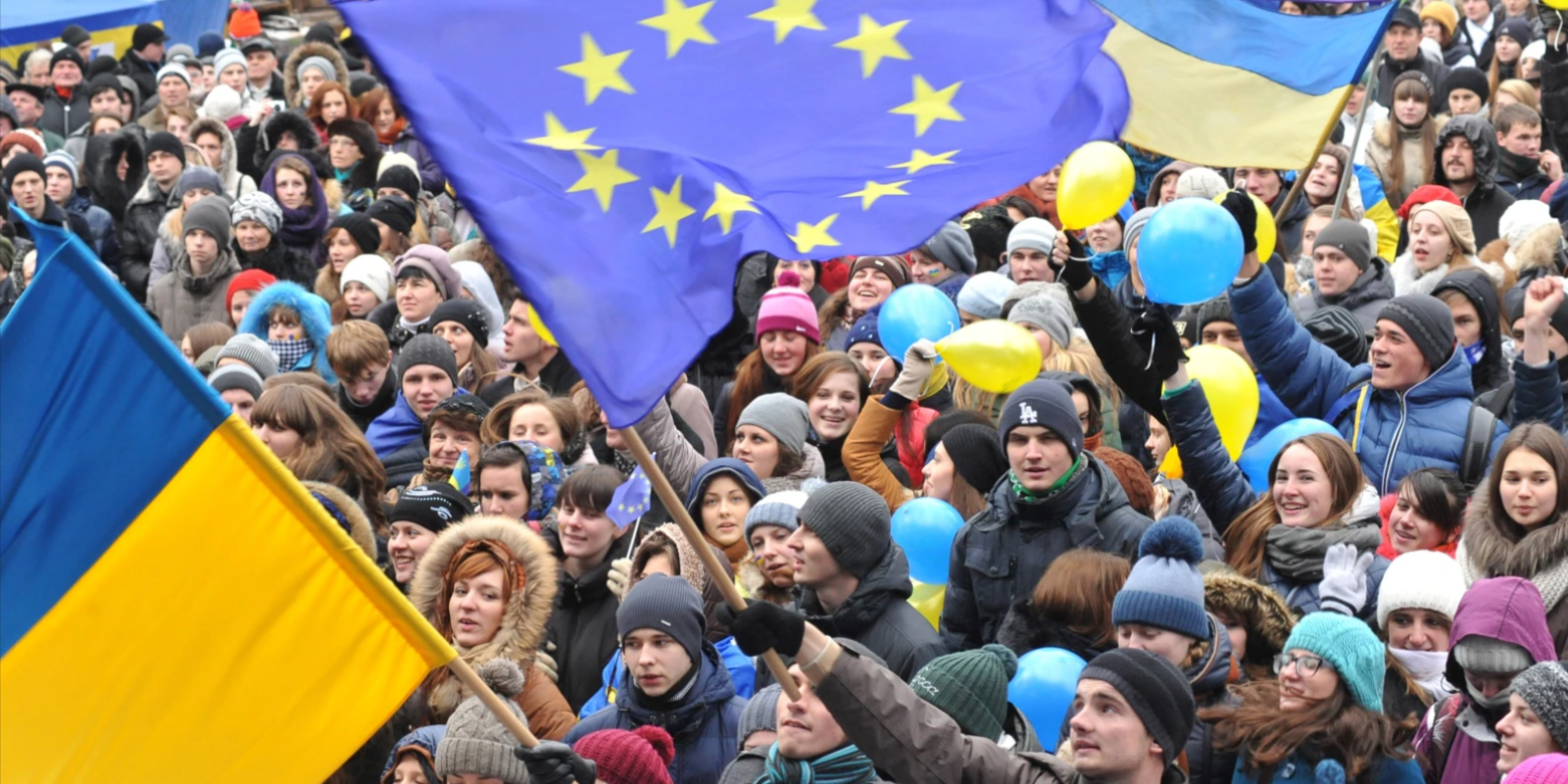
Maidan 2014
On February 24, 2022, the Moscow despot launched a full-scale invasion against his peaceful, democratic neighbor. Democracy and freedom on his doorstep will never be in his vision to rebuild the Russian Empire through brute force.
So here we are, centuries and centuries later, and Moscovia is still driven to destroy Ukraine, its history, its culture, its people. Today, Russia does it with massive weapons of war and genocide, led by a deranged leader carries forward a Russian hatred of Ukraine. This full-scale invasion is the culminating existential crisis for Ukraine. There is no choice but to defeat the enemy once and for all time.
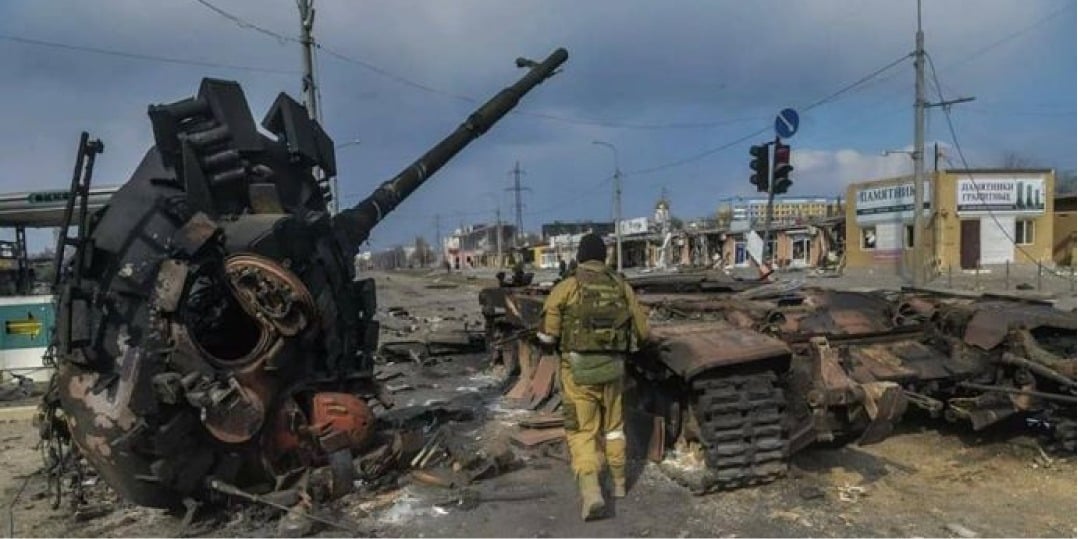
WAR IN UKRAINE 2022
